Daniil Bash
Benchmarking the Performance of Bayesian Optimization across Multiple Experimental Materials Science Domains
May 23, 2021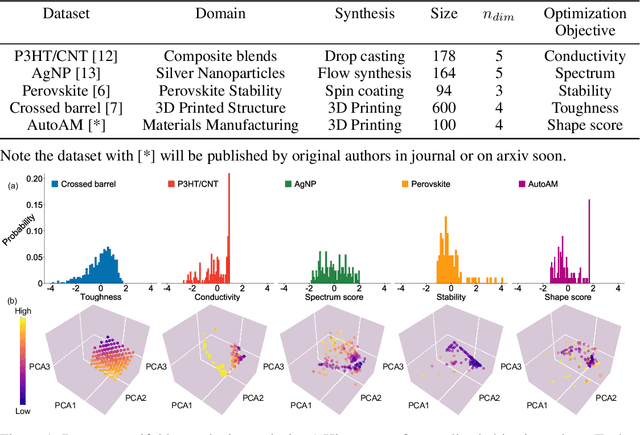
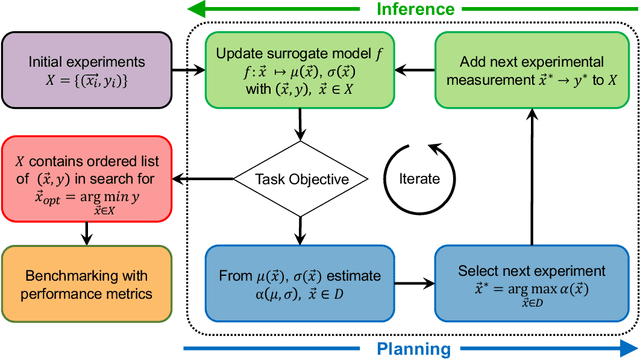
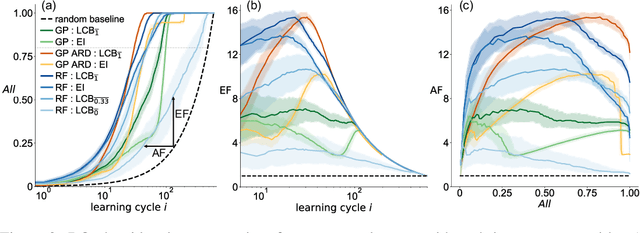
Abstract:In the field of machine learning (ML) for materials optimization, active learning algorithms, such as Bayesian Optimization (BO), have been leveraged for guiding autonomous and high-throughput experimentation systems. However, very few studies have evaluated the efficiency of BO as a general optimization algorithm across a broad range of experimental materials science domains. In this work, we evaluate the performance of BO algorithms with a collection of surrogate model and acquisition function pairs across five diverse experimental materials systems, namely carbon nanotube polymer blends, silver nanoparticles, lead-halide perovskites, as well as additively manufactured polymer structures and shapes. By defining acceleration and enhancement metrics for general materials optimization objectives, we find that for surrogate model selection, Gaussian Process (GP) with anisotropic kernels (automatic relevance detection, ARD) and Random Forests (RF) have comparable performance and both outperform the commonly used GP without ARD. We discuss the implicit distributional assumptions of RF and GP, and the benefits of using GP with anisotropic kernels in detail. We provide practical insights for experimentalists on surrogate model selection of BO during materials optimization campaigns.
Predicting thermoelectric properties from crystal graphs and material descriptors - first application for functional materials
Nov 15, 2018
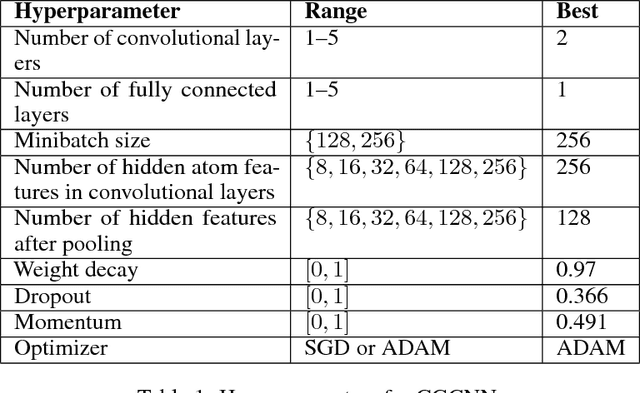

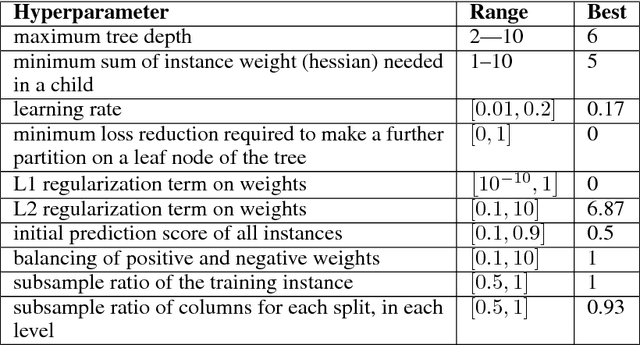
Abstract:We introduce the use of Crystal Graph Convolutional Neural Networks (CGCNN), Fully Connected Neural Networks (FCNN) and XGBoost to predict thermoelectric properties. The dataset for the CGCNN is independent of Density Functional Theory (DFT) and only relies on the crystal and atomic information, while that for the FCNN is based on a rich attribute list mined from Materialsproject.org. The results show that the optimized FCNN is three layer deep and is able to predict the scattering-time independent thermoelectric powerfactor much better than the CGCNN (or XGBoost), suggesting that bonding and density of states descriptors informed from materials science knowledge obtained partially from DFT are vital to predict functional properties.
 Add to Chrome
Add to Chrome Add to Firefox
Add to Firefox Add to Edge
Add to Edge